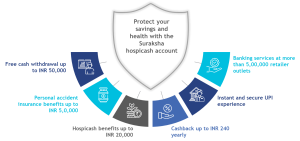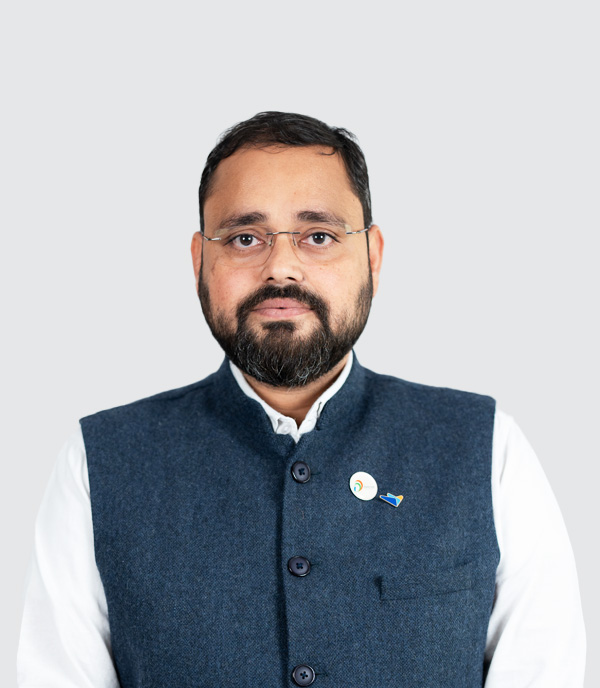Scaling what matters: Empowering agents with meaningful communication design
 by Akhand Tiwari and Ganesh Ananthanarayanan
by Akhand Tiwari and Ganesh Ananthanarayanan Oct 6, 2025
Oct 6, 2025 4 min
4 min
Airtel Payments Bank and MSC boosted BC agents’ incomes with Suraksha by combining product innovation and communication design, scaling agents beyond CICO, activating millions of accounts, and ensuring sustainable, meaningful financial inclusion.
Business correspondents (BCs), the backbone of India’s financial inclusion efforts, now struggle to remain viable. BCs are agents who enable the cash-in cash-out (CICO) expansion to drive growth and financial inclusion, especially in underserved, rural, and remote areas. Most rural BC agents earn just INR 8,000 (USD 97) a month, and some make as low as INR 600 (USD 7). While BCs in a few in high-footfall areas perform better, they remain the exception.
For most BC agents, CICO alone no longer provides a sustainable livelihood. Agents face a limitation on the number and type of financial products and services, or use cases, they can provide. They face high competition, shrinking margins, and the growth of digital payment modes that bypass them altogether. As a result, multiple partners or providers face high levels of inactivity or dormancy, as much as 30% to 65%, among agents.
MSC (MicroSave Consulting) and the Airtel Payments Bank (APB) embarked on a transformative pivot to respond to this growing crisis. We enabled agents to move beyond basic cash-in and cash-out transactions, such as deposits and withdrawals, and become providers of additional meaningful, value-driven financial products.
MSC and APB used Suraksha, a basic no-frills deposit product with multiple additional features, such as hospicash insurance, cashback incentives, and higher transaction limits, to achieve this. Suraksha was designed with the low-and moderate-income (LMI) customer in mind. It reflects the financial aspirations of underserved communities and provides agents with an opportunity to earn commissions beyond standard cash transactions. Although few APB retailer outlets sold Suraksha, its customers remained unaware of the products’ features, such as insurance, cashback, hospicash, and a seamless UPI experience.

MSC and APB sought to address this challenge and drew on insights from an earlier successful intervention to combat the lack of awareness. We took lessons from a behaviorally informed communication approach that had encouraged rural women to make small deposits. Based on this proof of concept, we designed a new communication toolbox that included a suite of sales pitches, posters, banners, short videos, and WhatsApp-ready messages. The intervention did more than simply design leaflets and banners. It designed materials that agents would actually use, and customers would remember.
The toolbox resulted in a surge in adoption. The number of agents who sell Suraksha increased more than 75-fold, from just more than 4,000 in 2023 to more than 3,00,000 by 2025. Customers opened more than 3.9 million Suraksha accounts, and 80% of those accounts remain active. Suraksha has now become a best-selling product at APB, and we have redefined it as a “safe second account.” Most importantly, agents’ incomes have increased by at least 5%, as they now have more relevant use cases to offer and the confidence and capability to sell them effectively, which brings them closer to economic viability.
This experience taught us that effective communication is an infrastructure in itself for inclusive finance. We also learned how:
- LMI customers think in terms of households, not individuals: LMI customers often view financial risk as a threat to the entire family. Based on this insight, we redesigned the visuals to highlight families instead of individuals. This shift aligned with how rural customers interpret risks as a collective burden. It made the product more relevant and reassuring.
- Functionality makes collaterals more durable and relevant: The sustainability of marketing materials has long been a concern for providers. APB, too, sought durable collateral that would not be discarded or covered up over time. To address the issue, we added functional elements, such as QR codes for customer payments, to ensure that the materials served a daily purpose. This practical value encouraged agents to keep providers visible and in use for longer.
- Simple, accurate messaging reduces the risk of misselling: Clear, easy-to-understand communication boosted product adoption, and importantly, minimized the risk of misselling, a growing concern among regulators. Suraksha equipped agents with precise messaging to ensure they could explain bundled products confidently and accurately, which efficiently aligned what is sold with what is understood.
This experience with Suraksha reveals a crucial shift. It addresses how new products alone cannot solve the agent viability crisis. We need to reimagine how we communicate, adopt, and embed these products into the everyday lives of customers and agents alike.
As the sector looks ahead, one thing is clear: Sustainable financial inclusion will depend on what financial service providers offer and how they enable agents to deliver it. We need to empower agents with the right products and the right narratives. This will enable them to move from dormant touchpoints to dynamic engines of trust and transformation.
Although the CICO model faces challenges, it remains fundamentally sound. The model simply needs constant reimagination to serve the communities that depend on it and empower our invisible business correspondents.
“This article was first published on “The Pioneer” platform on 30th September 2025.
Written by

Akhand Tiwari
Senior Partner
Leave comments